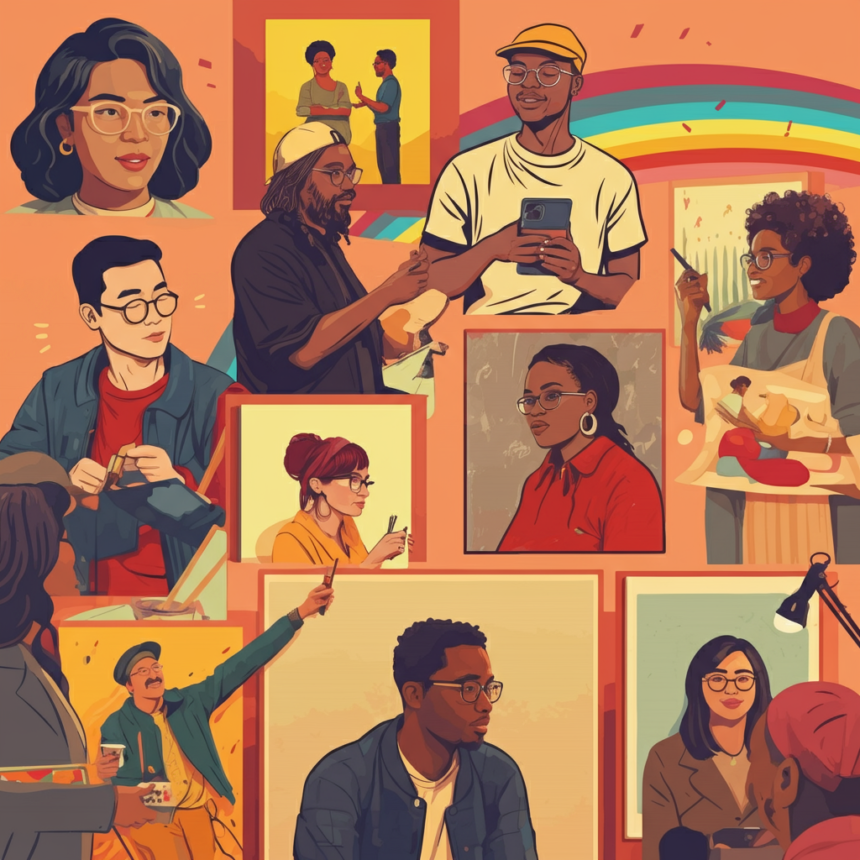Introduction to Gay for Fans
The “gay for fans” phenomenon is an intriguing and emerging trend where creators claim or present queer identities to resonate with their audiences, catering to broader markets that value LGBTQ+ representation. While topics surrounding this subject are as dynamic as they are complex, much of this energy stems from its significant cultural, ethical, and economic implications.
This blog takes a deeper look into what “gay for fans” truly encompasses, the motivations driving its rise, the controversies swirling around it, and the broader influence it holds over creators and the audiences they serve.
The Rise of Gay for Fans
The phrase “gay for fans” recognizes how some creators, especially in the entertainment or content creation industries, center LGBTQ+ themes or personas in their work—even when they may not identify with the queer community in their personal lives. It often serves as a way to connect with fans who appreciate diversity and inclusion while simultaneously engaging with this influential cultural demographic in meaningful ways.
Emerging primarily from digital platforms like TikTok, YouTube, and OnlyFans, where bonding with audiences is vital, the phenomenon has reshaped discussions around identity, authenticity, and expression in public spheres. While it adds visibility to queer stories, such visibility also raises questions around authenticity and responsible representation.
Why Creators and Fans Gravitate Towards This Content
What drives creators to “go gay for fans,” and what keeps fans coming back for more? Let’s explore some potential motivations.
For Creators
- Market Appeal
Representation, now more than ever, sells. LGBTQ+ themes resonate deeply with advocates, allies, and individuals looking for reflections of themselves in mainstream storytelling or niche-focused platforms. Creators often amplify such narratives as a way to increase their relatability, thus garnering a more engaged following.
- Creative Expression
For some creators, adopting queer narratives or personas provides a canvas for storytelling or performance outside societal expectations. It allows for the exploration of fluid identities and unconventional themes.
- Revenue Incentives
Most proponents of “gay for fans” recognize the monetary benefits associated with creating queer-friendly or targeted content. From crowdfunding to subscription-based models on platforms like OnlyFans, creators can align their work with profitable audience demographics to generate consistent income streams.
For Fans
- Representation
Audiences crave representation. Whether someone identifies as LGBTQ+ or allies with the community, seeing creators adopt these themes builds solidarity and affirms inclusion.
- Novel and Intriguing Content
Presenting fluid identities often creates content that feels fresh or experimental, inviting audiences who are yearning for something new.
- Community Connection
Such creators bring together like-minded communities, uniting viewers who rally around queer positivity and unique narratives.
Ethical Considerations Surrounding Gay for Fans
While “gay for fans” can symbolize progress and an expanded marketplace for creators, it doesn’t arrive without pivotal ethical debates.
Authenticity vs. Capitalizing on Identity
Critics often argue that creators adopting queer narratives without authentic identification risk trivializing real struggles of the LGBTQ+ community by performing identities purely for profit. This can leave segments of the audience feeling exploited, rather than celebrated.
Impact on Authentic Representation
This phenomenon also challenges genuine representation when the queer community is still fighting systemic marginalization. Audiences sometimes question if creators authentically amplify these voices or monopolize spaces meant to highlight lived experiences.
Consent within Storylines
Especially across subscription platforms, creators must be careful not to blur the lines between queer exploration and tokenized exploitation. Engaged audiences deserve work created with care and thoughtfulness toward modeled behavior and themes.
Examples of Popular Creators
Some notable creators exemplifying the “gay for fans” phenomenon have both sparked inspiration and ignited debates.
- OnlyFans Content Creators
Many high-profile creators on this platform cater their content toward LGBTQ+ subscribers through queer narratives, flirty interactions, or direct communication while sharing behind-the-scenes snapshots of their lives. It’s this level of relatability paired with visuals that generates success.
- TikTok and YouTube Influencers
TikTok influencers like those focusing on LGBTQ+ comedy, fashion, or romance routinely engage with queer themes or directly address their queer fans through personal anecdotes or targeted skits. YouTube vloggers who lean on LGBTQ+ community ties, both real or perceived, have also found notable traction, winning audience loyalty that builds viewership outside conventional content boundaries.
The Market Trends and Revenue Streams
Subscription-Based Earnings
The platform subscription model, epitomized by OnlyFans, Patreon, and others, has risen to massive profitability for content correlating with LGBTQ-friendly fans. With the creator economy surging, audiences actively fund creators aligned with queer positivity and progressive themes.
Data-Driven Engagement
Data analytics proves the power behind queer-friendly content’s ability to reach expansive, recurring engagement. Media managers frequently analyze this surge across platforms such as TikTok or Instagram to reflect boosted post-campaigns ROI as digital identity-driven monetization grows mainstream.
Collaborations in Marketing
Brands targeting LGBTQ+ audiences often collaborate with creators pushing queer-friendly content themes. Inclusive advertising budgets form lucrative channels for diversified partnerships among marketers.
Moving Beyond the Rainbow
“Gay for fans” is an example of how identity, entertainment, and empowerment intersect for audiences and creators alike. While fostering incredible inclusivity and engagement opportunities, it also highlights the thin tightrope between uplifting and exploiting demographics.
Creators and audiences have a shared responsibility to ensure authenticity and honest representation triumphs over monetary incentives or performative displays. Ultimately, platforms, fans, and creators thrive strongest together when diversity celebrates culture responsibly.
Common Questions about Gay for Fans
Is it wrong to create queer content if you’re not LGBTQ+?
Not necessarily. However, intent matters. Creators should craft content with authenticity, care, and respect toward LGBTQ+ communities while minimizing harm or exploitation.
Can this phenomenon trivialize real struggles of LGBTQ+ people?
There is this risk. Brands and creators occupying cultural spaces intended organically for queer representation must tread lightly, lifting real-life narratives instead of co-opting them.
What should fans or audiences do to support authentic representation?
Fans may advocate for inclusivity, follow LGBTQ+ creators, donate instead toward nonprofits advocating equality initiatives. Awareness drives positive behavior influencers publicly verifying authenticity sources.





